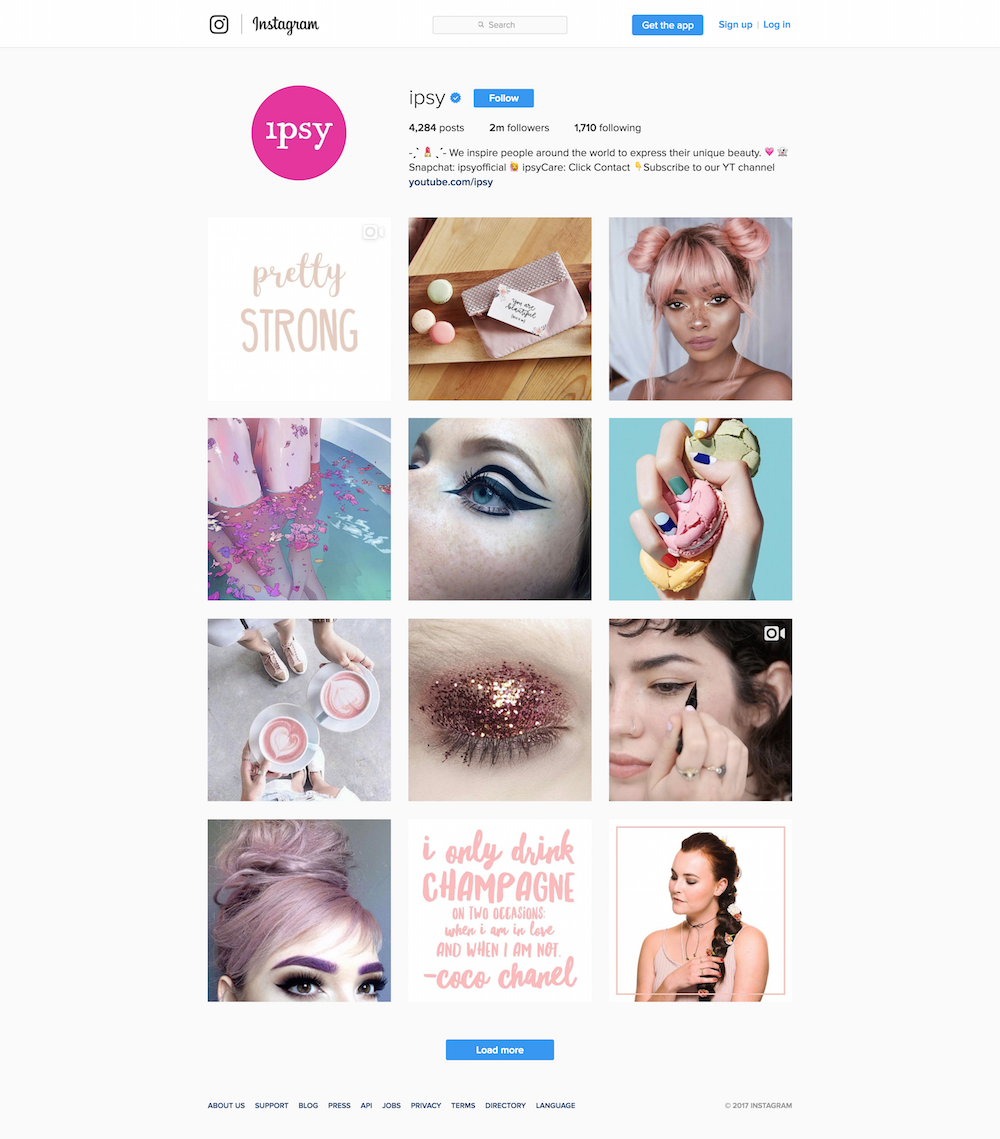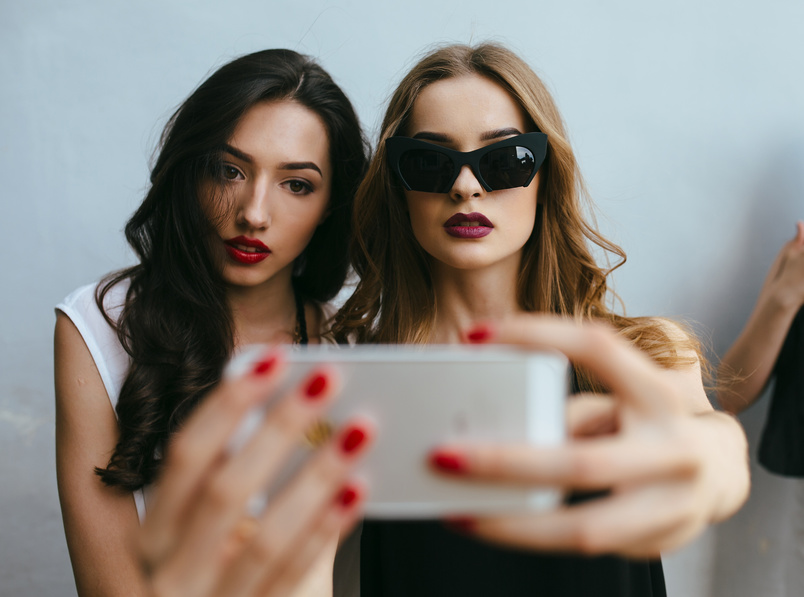The greatest content marketing challenge for brands is two-fold. They must keep up with the demand for content, both in terms of the quantity required to stay relevant and the quality that differentiates from competitors in the same niche.
Content volume is one part of the equation; alone it cannot build or sustain momentum. Consumers are constantly bombarded with more digital information than ever before.
“With audiences becoming more hyper-focused, brands are seeing success […] by providing user-generated content.” Sprout Social
The online landscape is rapidly changing. To keep up, brands must personalize content to speak directly to segmented groups of customers.
User generated content (UGC) is an effective way to boost marketing efforts and build a brand. It’s the type of content that drives authentic online engagement alongside a fun, shared and memorable experience.
What is user generated content?
The strategic implementation of UGC begins when brands start listening to consumers. It’s a departure from broadcasting marketing messages in a one-directional method to customers.

User generated content (UGC) is promotional and sometimes viral participation by consumers, who are inspired to share their patronage and comments online, through blogs, forums, podcasts, memes (digital images), and social media.
In terms of using UGC as a marketing strategy, it can accomplish four main objectives:
-
Save time and money on in-house advertorial content production
-
Diversify content focus and share the spotlight with customers and brand advocates
-
Increase reach of branded content through third-party networks and websites
-
Strengthen and personalize a brand by inspiring customers to share reviews, photos, videos and collateral that offers a first person endorsement
User generated content is how you get customers to sell for you. It’s the equivalent of handing a microphone to your customer, who chooses to endorse your brand of their own free will and without paid endorsement.
Unlike working with influencers (which now requires full disclosure of sponsored promotion or product placement by the Federal Trade Commission), user generated content is typically unpaid, but incentives are expected, frequently in terms of points or branded merchandise.
Content that is not sponsored, carries authenticity that other types of marketing tactics do not offer. Consumers trust it because it is being shared, not by the brand, but by an average customer.
Diversify content and engage consumers
Instead of a blatant, conventional marketing brands are creating experiences that can be shared by consumers. This approach puts the consumer in the spotlight. It may seem counter intuitive, but it works.
According to Sprout Social, “Brands often look to content already created by users, so it turns into a simple ‘ask’ to repurpose. Additionally, consumers love being noticed by brands they enjoy. Not only that, but brand interactions lead to serious revenue opportunities.”
It’s the perfect answer for brands that struggle to create online awareness for their products and services. Review sites like Trustpilot, for example, know that before a customer will buy, he or she wants to know about the purchase experiences of other consumers. They trust word of mouth endorsements more than brand claims.
Empower content creators
For some brands like Go Pro, Starbucks, and Apple user generated content is a natural next step. For others, the buy-in for an investment in user generated content can be a hard sell. Yet UGC is swiftly becoming the new normal, so brands must learn how to leverage it.
It was Andy Warhol who stated “In the future, everyone will be world-famous for 15 minutes,” and the success rate of UGC is based on that idea. Individuals want to experience online celebrity, and brands that allow them to do so are rewarded by purchase decision, loyalty, and word-of-mouth (WOM) advertising.
Here are three creative examples of user generated content, that had a viral impact, by placing the spotlight on the customer first.
1. Coca-Cola’s personalized bottles
A sensational UGC campaign was launched by soft drink leader Coca-Cola in June, 2014, that changed the label on Coke products. First, anticipation was built as Coca-Cola asked customers to check a database, to see if their name had been chosen for bottle labeling (only 150 names were chosen for the campaign launch).
Second, they created a unique webpage that allowed consumers to personalize their name on a digital bottle of a Coca-Cola product, and share it on social media. The “Share a Coke” campaign instructed consumers to find their name on a bottle, take a picture and ‘share” their own personal bottled soft drink. This resulted in millions of online social posts documenting friends, family and co-workers sharing a personalized soda, with a friend.
2. Ipsy’s Instagram influence
Personalized Beauty Discovery, Inc., is the organization behind the national success of Ipsy, a cosmetic subscription service that curates customized gift assortments of cosmetics for consumers.
Differentiating the brand from other cosmetic subscription businesses, IPSY relies heavily on user generated content by providing multiple incentives to encourage customers to share reviews, and stylized looks on Instagram.

Customers enrolled in the IPSY subscription service earn points for writing reviews of the products, and sharing those reviews on social media.
Additionally, large and expensive prizes are distributed monthly, which encourage women to use the cosmetics, and share a photo on Instagram, tagging IPSY, and creating viral sharing of fashionable, creative cosmetic trends.
Customers also earn points for free products by sharing the content of their monthly bag on social, with an affiliate link that earns them extra rewards, when family or friends sign up for the service.
User generated content and influencer marketing fuels demand for the subscription, and the brand frequently suspends enrollment, and must ‘wait list’ customers, with a specific platform designed for established influencers to monetize through the Ipsy Open Studios program.
3. Chobani’s ‘Love Story’
How much do customers appreciate the opportunity to have their “15 minutes of fame” thanks to digital marketing and branding? Chobani was able to increase sales of its Greek yogurt by more than 225.9%, thanks to the “Share Your Chobani Love Story” campaign.
The brand asked consumers to submit video and photos and share what they loved most about Chobani. The company then publicized submissions on the company website, billboards, digital advertising and social media.
Final thoughts
Brands that create loyalty programs for customers which systematically encourage the creation of user generated content, often benefit from robust sales growth.
If you plan to incorporate UGC into your marketing strategy, remember that successful campaigns typically offer a reward or incentive (e.g., a contest, prize or redeemable points). Participation rates are higher for incentivized campaigns, where the consumer receives a benefit for sharing their product endorsement.
Remember that consumers are rarely altruistic. They understand the value that brands receive from user generated content, and expect to benefit too, in some small way, for their effort.
This article has been edited.
Mansi Dhorda is an established Content Marketing Specialist at E2M, a Digital Marketing agency, and PR Account Manager at PRmention, a Digital PR agency. She is well-versed in concepts related to content marketing, communications strategy and branding. The above information is compiled using inputs from Mansi and experts at Arivify. Connect with @mansidhorda on Twitter.
© YFS Magazine. All Rights Reserved. Copying prohibited. All material is protected by U.S. and international copyright laws. Unauthorized reproduction or distribution of this material is prohibited. Sharing of this material under Attribution-NonCommercial-NoDerivatives 4.0 International terms, listed here, is permitted.













